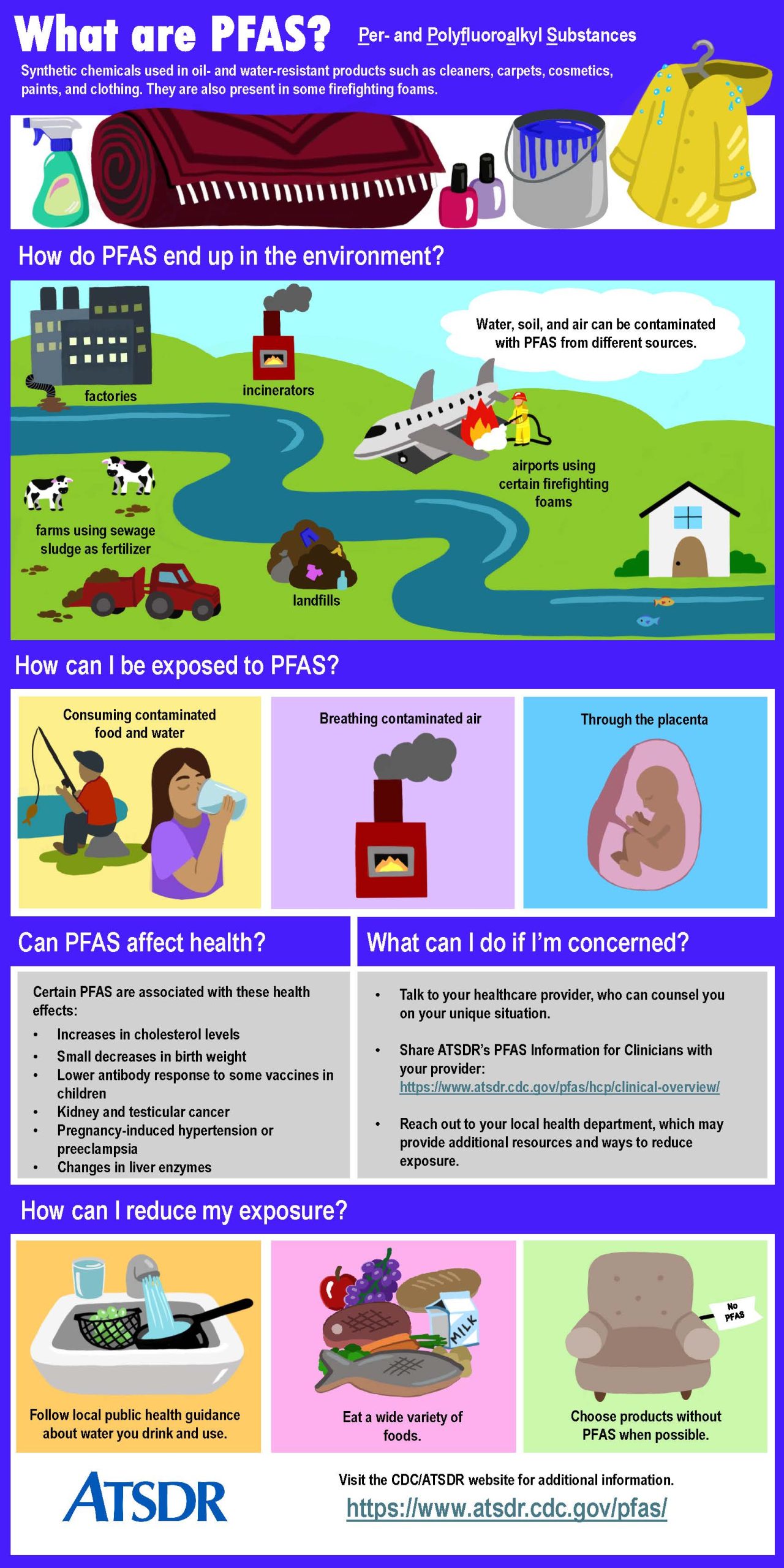At a glance
The PFAS Infographic provides concise information about PFAS to the public. See how you can be exposed to PFAS and how to reduce PFAS exposure.
Content Source:
Agency for Toxic Substances and Disease Registry
A .gov website belongs to an official government organization in the United States.
A lock ( ) or https:// means you've safely connected to the .gov website. Share sensitive information only on official, secure websites.
The PFAS Infographic provides concise information about PFAS to the public. See how you can be exposed to PFAS and how to reduce PFAS exposure.

Synthetic chemicals used in oil- and water-resistant products such as cleaners, carpets, cosmetics, paints, and clothing. They are also present in some firefighting foams.
Water, soil, and air can be contaminated with PFAS from different sources.
Certain PFAS are associated with these health effects:
Visit the CDC/ATSDR website for additional information.https://www.atsdr.cdc.gov/pfas/
PFAS are man-made chemicals used in products worldwide. They are widespread in the environment and found in people and animals across the globe.
View All
